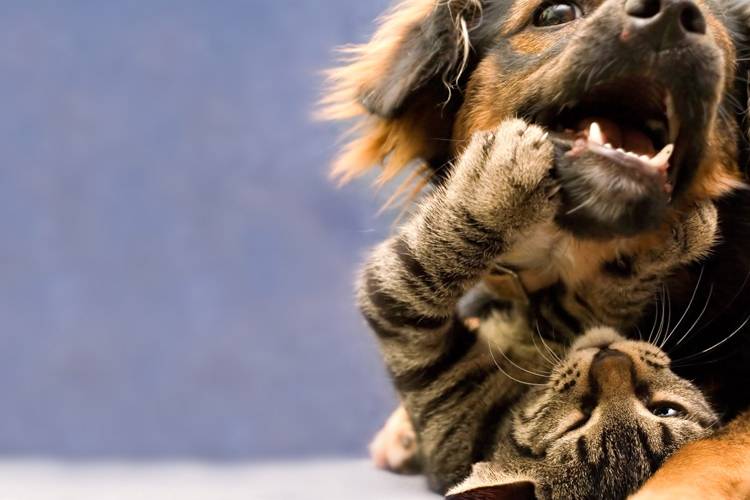Shall we get another one?
In many one-pet homes, you may want to add another animal companion: sometimes so that the first one doesn’t get lonely or bored, and other times simply because you like them or so that each ‘human’ family member has an ‘animal’ companion in their care.
pets
Share

The combinations are endless, but some may generate co-habitation problems or may not be very suitable. For example, in a house with a terrarium and one or several snakes, getting a rabbit or hamster… Or if you have a rabbit, getting a greyhound…
OF THE SAME SPECIES...
A very common situation is to have several pets of the same species, whether they are dogs, cats, rabbits or fish.
• Dogs. In these cases you have to take into account the character and gender of the animal you already have at home. If you have a calm adult female, adopting a young, active, playful male dog may turn the house upside down. Dogs reach sexual maturity at between 7 and 9 months old. There is usually direct competition between males, but also between females.
- Male-female. If they are not sterilised, as well as the risk of procreation, you can have problems between two non-sterilised males, especially if they have a similar size and age.
- Female-female. With two females you are less likely to have problems, but they can still appear when one or both of them go on heat. Sterilising one or both animals “masks” their gender and can make things easier.
- Male-male. If there are already problems, it is preferable to sterilise the animal which seems calmer.
• Cats. To have several cats, you have to keep in mind that if they are not neutered, having two male cats living together is difficult because their territory is a very important factor, and this is reduced to the size of a flat. However, females tend to live in groups, especially if they are related.
CATS AND DOGS TOGETHER
If you are thinking about have cats and dogs together you have to know that the situation is easier when you already have a cat and the second pet is a young dog that you bring home. The cat already knows its territory and where to hide, and the puppy will see the cat as a companion, if it is not too shy.
Some canine breeds have a very strong predator instinct and co-habitation with cats, rabbits or small rodents is usually complicated. Northern breeds, for example, can be problematic.
AND CATS AND BIRDS?
Birds are one of the classic preys of cats, so you must keep them in an especially strong cage and out of reach of the cat. They don’t have to be in separate rooms, unless being together stresses out the birds or the cat is always watching the birds.
As for dogs, although they can also be attracted by birds, you are less likely to have problems.
BIRDS
Aviaries or large cages enable you to keep several birds in the same installation. Some birds are very sociable, such as lovebirds, and others can be shier. Usually you combine birds of the same family: parrots and budgies (which are psittacidae), song birds (passerine family), etc.
FISH, CAREFUL WICH ONES
You can also have problems in the fish tank. There are very aggressive species (Betta fighting fish) or voracious ones (cichlids), and you may face episodes of cannibalism if you keep them in small tanks with little vegetation or spaces to hide.
As for rodents, you must take into account their exponential breeding capacity or the aggressiveness between males of the same species.
However, there are always exceptions to the rule, and it is not uncommon for dogs and cats to live in the same space or for a budgie to be a dog’s best friend.
Before taking the plunge, it is recommended to ask a vet for information about possible conflicts and how to act during the first contact or if you detect any problems.






